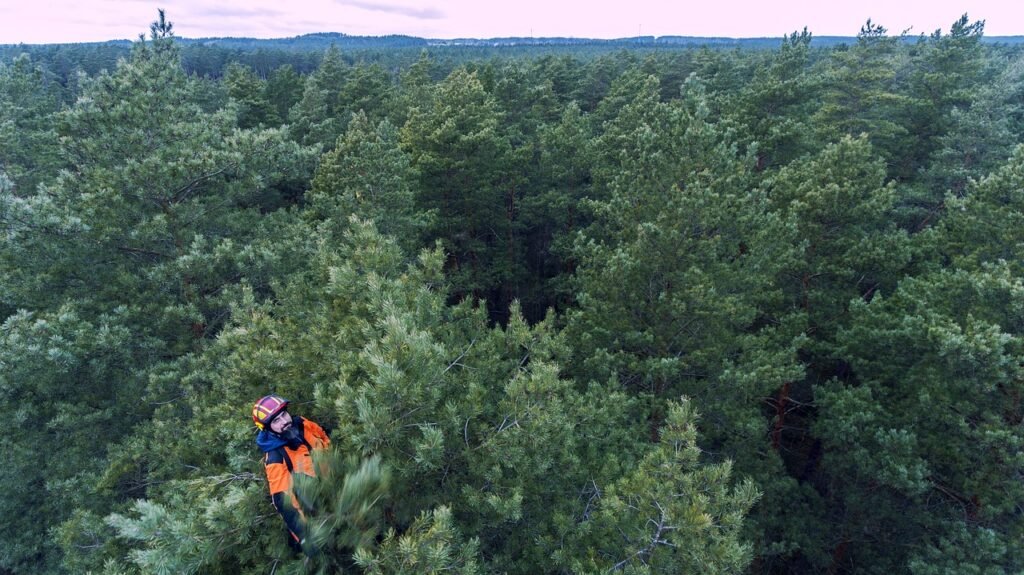Tree Removal: Knowing When It’s Necessary and How to Safely Proceed
In the realm of arboriculture, tree removal is a decision not to be taken lightly. Trees are not just fixtures of the landscape; they are living organisms that contribute to the ecosystem, provide shade, and enhance the aesthetic appeal of our surroundings. However, there are circumstances where tree removal becomes necessary for safety, property preservation, or ecological reasons. In this guide, we’ll explore when tree removal is warranted and the proper steps to ensure it’s done safely and responsibly.

Understanding When Tree Removal Is Necessary
Health Assessment: The first step in determining whether a tree needs removal is conducting a thorough health assessment. Signs of decay, disease, or structural weakness may indicate that a tree is beyond saving and poses a risk to its surroundings. Look for symptoms such as fungal growth, dead branches, leaf discoloration, and trunk cavities. Consulting with a certified arborist can provide expert insight into the tree’s condition.
- Safety Concerns: Trees that are leaning precariously, have large dead branches, or are located near structures, power lines, or pedestrian areas pose significant safety hazards. In such cases, removal may be necessary to prevent property damage, personal injury, or liability issues.
- Property Damage: Trees with invasive root systems can cause damage to foundations, sidewalks, and underground utilities. If efforts to mitigate root damage are unsuccessful, removing the tree may be the most practical solution to prevent further harm to property infrastructure.
- Diseased or Infested Trees: Trees afflicted with contagious diseases or infested by pests pose a risk of spreading the problem to nearby trees. In these situations, prompt removal can help prevent the spread of disease and preserve the health of other vegetation in the area.
- Obstruction or Encroachment: As trees grow, they may encroach upon structures, obstruct views, or interfere with construction projects. When pruning or trimming is insufficient to address the issue, removing the tree may be necessary to accommodate the desired land use or preserve sightlines.
How to Safely Remove a Tree
- Assess the Surroundings: Before initiating the removal process, evaluate the area surrounding the tree to identify any potential obstacles, such as buildings, power lines, or other trees. Establish a clear escape route and ensure there is ample space for felling the tree safely.
- Obtain Necessary Permits: Depending on local regulations and the size of the tree, you may need to obtain permits or permissions from municipal authorities before proceeding with tree removal. Failure to adhere to legal requirements could result in fines or penalties.
- Engage Professional Services: While small trees may be manageable for DIY removal, larger or more complex tree removals should be entrusted to experienced arborists or tree service professionals. They have the expertise, equipment, and safety protocols to carry out the task efficiently and minimize risks.
- Plan the Felling Direction: Determine the direction in which the tree should fall to avoid obstacles and minimize property damage. Factors such as wind direction, lean, and the distribution of branches should be considered when planning the felling direction.
- Execute the Cut Safely: Using proper cutting techniques and equipment, make the necessary cuts to fell the tree in the predetermined direction. Depending on the size and condition of the tree, this may involve a combination of cuts, such as a notch cut and a backcut, to control the fall.
- Dispose of Debris Responsibly: Once the tree is down, dispose of the debris responsibly. Depending on local regulations, you may need to arrange for tree limb chipping, hauling away the wood, or recycling the material for mulch or firewood.
- Stump Removal or Grinding: After the tree is removed, you may choose to have the stump removed or ground down to below ground level. Stump grinding eliminates trip hazards, prevents regrowth, and allows for landscaping or construction activities in the area.
- Replant or Rejuvenate: Consider replanting a suitable tree species in the vacated space to maintain the ecological balance and aesthetic appeal of the landscape. Alternatively, explore options for rejuvenating the area with shrubs, flowers, or ground cover.
Tree removal is a significant undertaking that requires careful consideration and adherence to safety protocols. By understanding the circumstances that warrant tree removal and following proper removal procedures, you can ensure the process is conducted safely and responsibly. Whether addressing safety concerns, preserving property integrity, or mitigating ecological risks, responsible tree removal practices contribute to the health and sustainability of our urban and rural environments.